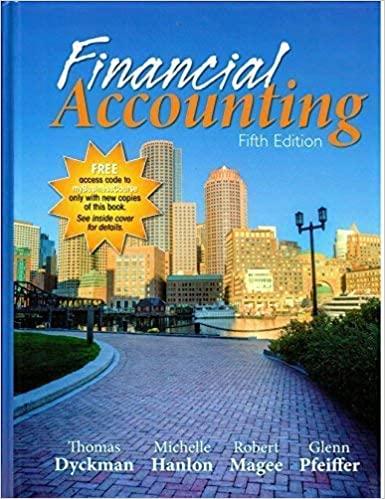Question
Harold is considering opening a new bucket factory in the Lower Mainland. One of his biggest priorities is running an ethical business. He is partnering
Harold is considering opening a new bucket factory in the Lower Mainland. One of his biggest priorities is running an ethical business. He is partnering with his friend, Selena, who is a Chartered Professional Accountant. Harold wants to learn more about some ethical principles and how his business can follow them. For example, he has heard of corporate governance but doesn't really know how it applies to his business, nor any means of implementing it. He wonders if there are other ethical concepts which may apply to him or Selena. Harold has worked on some projections and has an idea about fixed and variable costs, but he is confused about period and product costs. He isn't sure about what they are and why they're important to small business owners. Harold projects that material for each bucket will total $1. He plans to pay assembly line workers $20 per hour and each worker will be capable of making ten buckets an hour on average. Additionally, there will be other manufacturing expenses totalling $0.50 per bucket produced. Harold will be offering his two supervisors a salary of $60,000 each per year and his janitor will earn $45,000 per year. Equipment and factory rental will amount to $8,000 per month, while office/administration expenses will total $5,000 per month. Harold is planning on selling each bucket for $8. He is wondering about the level of sales volume and revenue he must generate on a monthly basis to avoid losing money. He has set aside $50,000 as a "loss fund" and is wondering how long it might last if he is 10% below the monthly break-even point. Harold is wondering what the annual sales level needs to be for him to earn a profit/salary of $80,000. Harold's uncle, Tony, has mentioned that he may need to purchase 1,000 buckets in the future, perhaps three years from now. Tony would be willing to pay $6 per bucket if Harold agrees to accept the order. Harold feels the factory might be quite busy by that point and is unsure if he would have capacity. Still, he is wondering about what factors go into accepting or rejecting a large order like that and if it is possible to make a recommendation right now. Harold has heard a rumour that a local tire factory owner wants to retire and is willing to bear the expenses of converting the factory, should a buyer agree to the purchase. The seller wants either $400,000 today or ten annual payments of $50,000. Harold can borrow money from the bank at 3.5% and is wondering about which option is cheaper, should he decide to go in that direction. Finally, Selena has given Harold a quick crash course on budgeting, but she is too busy to teach him about budgetary analysis. Harold is confused about why some variances are favourable and unfavourable. He is also unsure about the differences between a static and flexible budget. He wants an explanation of how budgets are used to evaluate actual results and the terminology involved in the process. Analyze Harold's business and advise him on the matters raised in the case. Make sure your recommendations are well supported by quantitative and qualitative analysis which ties to the case facts.
Step by Step Solution
There are 3 Steps involved in it
Step: 1

Get Instant Access to Expert-Tailored Solutions
See step-by-step solutions with expert insights and AI powered tools for academic success
Step: 2

Step: 3

Ace Your Homework with AI
Get the answers you need in no time with our AI-driven, step-by-step assistance
Get Started


